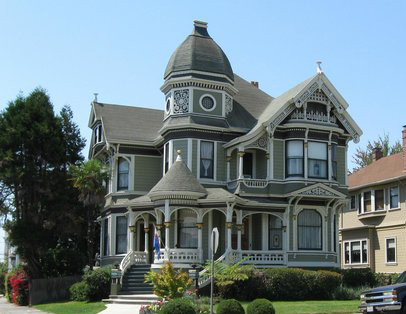How's the East Bay Market? Well, it Depends
This has been a topsy-turvy year for the Inner East Bay real estate market. Higher interest rates, presidential elections and instability in the tech industry have competed against higher inventory and pent-up demand. This has made 2024 activity somewhat inconsistent with previous years, and thus hard to project.
What we do know is that the number of available properties is at its highest level since Red Oak started tracking in 2012, yet the number of properties under contract is at its near lowest level (slightly better than the all-time low, which was last year). This leads us to a high supply/low demand dynamic, which puts downward pressure on prices and other key metrics.
We are seeing this broadly across the Inner East Bay. For example, the number of sales fell 14% between May and June (maybe because everyone and their neighbor were traveling?). Also surprising is the fact that median price fell 8% to $995,000 during the same timeframe (prices are still well above all years 2020 and prior).
But these trends are not bearing out when focusing on specific cities and neighborhoods. For example, the price of a 3BD single-family home that's 1,000-2,000 square feet increased 7% in Montclair, North Berkeley and El Cerrito (Q1-Q2, 2024 vs. 2023). And prices in Lower Rockridge increased 19%, while prices in Temescal increased 23%. This reveals the properties in certain areas that are priced and marketed well continue to attract significant competition.
What's more, over the past 10 years, Inner East Bay cities have seen significant appreciation, from 38% in Piedmont to 120% in Hayward.
By watching the market closely, and using data analytics tools, we can help you reach your real estate goals. Just reach out.
Fire Season: How to Prepare and Stay Safe
In the East Bay, fire season typically peaks in October. Last year, wind patterns and abundant rain the winter prior helped to keep things manageable, although so far 2024’s heat waves have proven a tough challenge. With over 3,800 wildfires so far as of mid-July, we could be on course to break records throughout California. It’s always worthwhile to take steps to protect lives and property and living in California, it’s practically a requirement.
Still faced with fire insurance difficulties, the availability of coverage options seems to be on every buyer’s and agent’s minds these days. Not sure what your options are? Has your homeowner’s insurance been canceled or increased dramatically in cost? You’re not alone. Reach out to discuss options - we have resources!
Just remember that preparation and prevention not only save lives, but also may protect your home. Everyone in the household should pack a go bag, make emergency plans, and prepare for possible power outages. It’s also important to harden your home against wildfire.
There are a number of ways that your home can be exposed to a wildfire. Direct flame, radiant heat from burning vegetation, and flying embers all pose a risk. Wildfire embers can be blown up to a mile, instantly spreading the blaze to a new area.
It’s nearly impossible to make your home entirely fireproof, but here are several steps that can reduce risk and enhance safety.
Check your roof. It should be made using ignition-resistant construction methods along with Class A fire-rated materials, asphalt, clay, metal or slate.
Ensure your rain gutters aren’t collecting flammable materials.
Apply fire-resistant building materials on the patio coverings, decks, fences, eaves, soffits and exterior walls.
Cover vents with 1/8" to 1/4” metal mesh to keep embers out.
Install 3/8" to 1/2” metal mesh over chimneys and stove pipe outlets.
Secure dog/cat doors during fire season and make sure they are properly sealed.
Use weather stripping to cover gaps around garage doors.
Dual-pane windows reduce the chance of windows shattering from the heat in a fire.
Anything within 5’ of the building should be fire-resistant.
Be sure your home is surrounded by a defensible space.
Any flammable materials should be as far from the home as possible.
Be sure to clean-up any flammable yard debris. Use non-flammable landscaping and hardscape material.
Keep hoses hooked-up that can reach all areas of your home.
Make sure the driveway allows easy access for emergency vehicles.
The Berkeley fire in 1923 and the Oakland Hills firestorm in 1991 demonstrated the potential for destruction and loss of life that shouldn’t be ignored. Neighborhood preparedness is a great way to improve the community’s disaster readiness.
Connect with neighbors and inspire them to harden their homes. Stock up on fire extinguishers, shovels, and rakes to help combat any small fires before they spread. Oakland and Berkeley offer training opportunities in disaster protocols. Since we might be our own first responders, good information and practical instruction is critical.
Since we can’t control when or where wildfires start, making an effort to increase fire awareness and safety is prudent! Reach out if you have suggestions or need help finding resources to make this a reality.
Weekend Wandering - Easy East Bay Getaways

Whether you're craving a coastal escape, a little California history, or a serene spa soak, the East Bay's strategic location is central to an array of weekend getaway options. From seaside villages and redwood forests to gold rush history, these destinations promise unforgettable escapes just a few hours from home.
Point Reyes National Seashore - Explore the scenic coastal beauty, hike to the lighthouse, and enjoy wildlife viewing. Be sure to visit the Earthquake Trail where the Pacific Plate meets the North American Plate (also known as the San Andreas Fault).
Bodega Bay - This picturesque fishing village offers whale watching, coastal hikes, and fresh seafood. Just 4 miles inland you’ll find the tiny town of Bodega where director Alfred Hitchcock filmed “The Birds.”
Mendonoma Coast - You may not find this labeled on Google maps, but “Mendonoma” is thought to encompass The Sea Ranch, Gualala and Point Arena, stretching both north and south along this spectacular stretch of coastline from Sonoma County up to Mendocino. Trek the Stornetta Lands, part of the California Coastal National Monument, added by Presidential Proclamation on March 11, 2014 or visit many of the coastal access beaches to be found. Be forewarned though - cell service is difficult to find in some of these more secluded pockets.
Calistoga - A great stop-over if you’re on a wine tasting tour. Known for hot springs, mud baths, and of course, world class food and wine. Visit California’s Old Faithful Geyser and the Petrified Forest for some geology lessons.

Santa Cruz - Home to the Santa Cruz Surfing Club, established in 1936. Enjoy the iconic Beach Boardwalk, then head over to the Mystery Spot (is it a real anomaly or only an illusion?). In nearby Felton, the Roaring Camp narrow-gauge steam trains will take you through the towering redwoods.
 Pinnacles National Park - Inland from Monterey you’ll find hiking and camping amidst towering rock spires and otherworldly caves. Keep the binoculars handy for spotting falcons, eagles and California condors.
Pinnacles National Park - Inland from Monterey you’ll find hiking and camping amidst towering rock spires and otherworldly caves. Keep the binoculars handy for spotting falcons, eagles and California condors.
Nevada City - In this Nevada County seat, you can explore the rich history of the Golden State. In neighboring Grass Valley is the Empire Mine State Historic Park where you can check out one of the oldest, largest, and richest gold mines in California.
Iowa Hill - A destination for the truly adventurous, you will arrive via a cliff hugging, guardrail free, gravel road. Completely “off the grid,” it's a haven for hiking, mountain biking, gold panning and mining (yes, nuggets are still found here).
Murphys - Wander the picturesque Main Street or partake in the burgeoning wine scene in this gold rush boom town. Visit the well-preserved architecture, historic landmarks and the unique Mercer Caverns. The annual Jumping Frog Jubilee (near Angels Camp) celebrates the launch of Mark Twain's literary career.
When you want a change of scenery, there are a multitude of options in the East Bay’s big back yard. You’re bound to discover more hidden gems on these easy road trips. We’d love to hear about them and are happy to share even more. Reach out.
Independence Day Celebrations in the East Bay - A Guide for 2024
Ignite your patriotic spirit with July 4th festivities in the East Bay! Events from parades to picnics provide sparkly experiences for one and all.
The East Bay’s maritime history is on full display for a holiday on the water
USS Hornet Museum - This retired aircraft carrier served for three decades, seeing action in WWII, the Vietnam War, and the recovery of the first two lunar landing space missions. Enjoy July 4th (10am to 5pm ) with music, food, and more!
The City of Richmond announced its annual fireworks show at Marina Bay Park. Music, food and fun for the whole family begins at 5pm. The fireworks show will begin around 9:15pm. For additional information call 510.620.6793.
From stars and stripes, to canines and classic cars, everyone loves a parade
Alameda 4th of July Parade - At 3.3 miles, this is one of the longest parades in the country. Start the day with a 5k race before enjoying the equestrians, dance troops, floats, antique cars, and marching bands.
Piedmont’s Annual Independence Day Parade & Picnic - East Bay families come from all around to enjoy this beloved parade which begins at 11am and goes through the middle of town. Stay after the parade for live music, food and activities in the park.
Moraga Fourth of July Celebration - Always a fun time, the Dog Parade starts at 11am. Stick around for food, games and family activities all day, with fireworks beginning at 9:30pm.
Fremont 4th of July Parade - This year’s theme is “Peace, Love, and Fremont.” The festivities begin at 10am (note this year’s annual flyover has been canceled).
There’s more!
El Cerrito’s WorldOne Festival - This annual family event includes food, fun and a classic car show. Events go from 11am to 5pm on the 4th.
The City of San Pablo brings back the 4th of July Multicultural Celebration beginning at 5pm. Enjoy food, carnival games and live music with performances by the Viva Santana tribute band and more! A spectacular drone show caps off the evening.
Head to the hills or the shoreline
It’s a bit of an East Bay tradition to make your way to higher ground or to the bayside for a panoramic perspective. If Karl the Fog cooperates, there are vistas to enjoy fireworks displays from San Francisco to Sausalito. If you or a friend have a hillside perch, that’s the ideal place to relax and enjoy the show. If you are thinking of venturing to popular spots like Grizzly Peak or the Lookout Point in Joaquin Miller Park, watch for road closures in Oakland and Berkeley.
Of course fire is always a huge concern, especially this time of year so please take note of the NO FIREWORKS directives. Stay safe, and be sure to create a secure spot for anxious pets.
We love a good celebration, so if you have any suggestions to share, reach out.
East Bay Bounty - Adventures in the Kitchen
East Bay communities have elevated the culinary experience to an enviable art form. Rich with variety and accessible to all budgets, it’s easy to source a dynamic meal for chow hounds and epicures alike.
Fresh from the Farm
One of the best ways to experience the East Bay’s culinary diversity is through its farmers’ markets, which offer fresh, locally sourced produce and artisanal goods. The Berkeley market is held three times a week and features an array of organic produce, cheeses, baked goods, and more. In Oakland, there are several market options to explore, from Grand Lake to Montclair, making it a perfect weekend morning destination. There are great farmers’ markets in El Cerrito, Richmond, Alameda, and downtown Hayward too, making it a snap to stock up on fresh and local ingredients for the week’s meals.
At the Grocery Store and Beyond

When it comes to grocery stores, the East Bay is home to some truly exceptional options to stock up or branch out. The Berkeley Bowl, and the Monterey Market, both located in Berkeley, are renowned for vast selections of produce and exotic ingredients. In Oakland, Piedmont Grocery offers a curated selection of gourmet foods, wines, and specialty items. This historic grocery store has been serving the community since 1902 and continues to be a go-to spot for those seeking unique and high-end products.
With several locations in Oakland and San Leandro, Supermercado Mi Tierra offers an ample selection of Mexican ingredients for everything from tamales to caldo siete mares. At the Saudagar Supermarket in Hayward, you’ll find Halal meats and Indian and Fijian spices. Tokyo Fish Market in Berkeley has an outstanding selection of fresh seafood, Japanese groceries, and specialty items. This market has been a local favorite for decades, offering everything you need for a perfect sushi night at home. Craving spicy and juicy Korean BBQ and kimchi? Stop by EM Deli & Catering for marinated meats for Korean-style BBQ or lunch boxes and snacks.

Eight individual vendors work together at Market Hall in Rockridge. Immerse yourself in sensory pleasure as you gather top-notch ingredients for an epic celebration or a quick picnic. If you’re looking for a delightful assortment of spices, salts, rubs, and more, get to the Oaktown Spice Shop, with locations in Oakland and Albany.
Don’t miss the El Cerrito Natural Grocery with its Prepared Food Annex, where you can find a great selection of organic and natural foods, as well as delicious prepared meals perfect for busy days or a quick and healthy lunch option.
Sweet Treats

If you’re craving dessert or a morning treat, you’re well-covered in the East Bay. Patisserie Rotha serves quintessential French pastries. It’s well worth the effort to show up early at the Albany location (especially on the weekend) as they sell out quickly. Local favorite, La Farine, has three Oakland locations and never disappoints. Don’t miss the best of the best in cupcakes at Cupcakin', which can be found in Oakland, Berkeley, and Walnut Creek.
The East Bay offers unmatched adventures in culinary delights and this is just a small overview of all the great options. Do you have a favorite to share? We’d love to hear about it, reach out!
East Bay Inspiration - Culture and the Arts
In the East Bay, culture thrives, history resonates, and artistic expression flourishes. Known for its eclectic mix of communities and dynamic arts scene, this region is a haven for those seeking unique cultural encounters. From world-class museums and historic theaters to grassroots art collectives and lively music venues, the East Bay brims with creativity and innovation.

Musical Heritage - The East Bay has launched legendary musicians from MC Hammer to Green Day. It’s a hub for all the musical genres; hip-hop, soul, funk, jazz, classical, folk, and rock. Enjoy a show at an iconic venue like the Fox Theater or the Ivy Room. Berkeley’s Freight and Salvage hosts unforgettable performances, workshops and classes that feature traditional and folk music. The West Coast Blues Society hosts the Red, White and Blues Festival at the Alameda County Fair and several other events through the summer.
Artistic Expression - Whether developing your own creative spark or surrounding yourself with thought provoking works by skilled and talented visual artists, the East Bay is filled with opportunity. The Richmond Art Center offers classes, exhibitions and events for all ages. The Betti Ono foundation is black women owned and committed to centering the work and lives of Black, Brown, AAPI, Immigrant, Indigenous, and LGBTQ+ artists and communities. A membership to Hayward’s Sun Gallery offers access to the gallery and the maker space. Of course, the renowned Oakland Museum of California and Berkeley Art Museum and Pacific Film Archive (BAMPFA) are easily accessed and full of inspiration.

Films and LiveTheater - At the New Parkway Theater, lounge on a comfy sofa and enjoy a beer while watching soccer or taking in a film. The Berkeley Rep has two stages for live productions and an acting school. The Broadway hit American Idiot debuted there in 2009 (see Green Day above). Catch an edgy comedy act at the historic Bal Theatre in San Leandro, or sharpen your talents in a workshop on acting, theater production or technical skills.
The East Bay is always an exciting and stimulating place to be! It’s not unusual to find yourself behind a Nobel Laureate in line at the coffee bar or crossing paths with a musical legend on the Bay Trail.
Do you have a favorite activity or venue? Would you like some more ideas? Reach out, we love to share.
Last Chance to Vote For RED OAK!
Red Oak has once again been nominated for Best Real Estate Company and Best Real Estate Brokerage by both Oakland Magazine and East Bay Express / East Bay Magazine's Best of the East Bay 2024 readers' poll. We would love your support to help win the awards again this year! Voting for BOTH polls ends early on Sunday, June 16th.
Voted Oakland and the East Bay’s Best Real Estate Company for 8 years, we are honored and humbled to be chosen by our communities each year. And while many of these type of polls have pivoted to ad-based models, we continue to be grateful that our clients, friends and supporters take the time to reach out and vote. It matters a great deal to us!
Do you know who else it matters to?
The small, local East Bay businesses that continue to depend on all of our patronage and support. So while you’re voting for the Best Real Estate Company, *ahem*, consider taking a scroll through the entire poll to vote for your favorite restaurants, gift shops, local classes and dog groomers too! Awards will be announced in July.
VOTE: East Bay Express / East Bay Magazine's Best of the East Bay |
Have questions about the East Bay real estate market? Reach out!
Architectural Styles throughout the East Bay
“Architecture is not just about creating physical spaces, but about creating a sense of place and belonging.” — Julia Morgan
The East Bay is rich with architectural variety. From Victorian flair to quintessential Craftsman, each style has left its mark in our many diverse neighborhoods.
 Victorian
Victorian
These iconic beauties, dating back to the 19th century, are the undisputed grand dames of the East Bay. Think intricate fretwork, elaborate porches, and soaring bay windows. Victorians offer a wealth of charm and character, but be prepared for potentially labyrinthine floor plans and the occasional creaky floorboard. Some great examples can be found in West Oakland, Alameda and Berkeley.
Colonial Revival
American colonial architecture draws inspiration from the past while incorporating modernized improvements. Its roots trace back to the Centennial Exhibition of 1876, which reawakened Americans to their colonial heritage. They feature symmetrical facades, gabled roofs, and classic columns.
Craftsman (Arts and Crafts)
Emerging in the early 20th century, the Craftsman style emphasizes natural materials, exposed beams, and low-pitched gabled roofs. These homes offer a sense of warmth and embody quality craftsmanship, often featuring inviting porches, built-in cabinetry and furnishings. Perfect for those who appreciate a timeless aesthetic and a connection to the Arts and Crafts movement. Many Craftsman-style homes can be found in Berkeley, Oakland, and Alameda.
 Tudor
Tudor
Bringing old-world charm to the East Bay’s architectural landscape, the Tudor style is characterized by steeply pitched gable roofs, decorative half-timbering, and tall, narrow windows with small, often leaded glass, panes. You can find these storybook houses in neighborhoods like Berkeley and Oakland's Claremont district, where their unique brick or stucco exteriors and charming details stand out.
Spanish Revival
This style gained popularity after the Panama-California Exposition of 1915 sparked a renewed interest in Spanish colonial architecture. These homes incorporate stucco exteriors, red-tiled roofs, arched doorways, and wrought iron details. Alameda’s Gold Coast neighborhood showcases beautiful Spanish Revival homes. You’ll also see them peppered throughout some of the older East Bay neighborhoods.
 Mid-Century Modern
Mid-Century Modern
Mid-Century Modern homes celebrate open spaces. Clean lines and integration with nature, open floor plans, and expansive walls of glass feature light-filled spaces and a connection to the outdoors. Iconic Mid-Century homes developed by Joseph Eichler are often sought out by appreciating buyers, and can be found in pockets throughout the region. Eichler collaborated with multiple architects to develop residential subdivisions of Mid-Century Modern style tract housing throughout California.
If you’re dreaming of a cutting edge architectural marvel, or are looking to restore a historic home, Red Oak would love to help. We’re in tune with all the details and revivals, and have resources and expertise to share, just ask.
How to Be a Good East Bay Neighbor
Fostering a safe and welcoming community starts with being a good neighbor, whether new to an area or not. The quality of a neighborhood is significantly influenced by the attitudes and behaviors of its residents. To help cultivate a kind and considerate environment year-round, consider implementing these valuable practices:
1. Be Mindful of Noise
Respecting noise levels, especially during late-night or early-morning hours, is crucial. Avoid loud music, slamming doors, or hosting noisy parties during these times. This is particularly important in townhouses or condos where shared walls make noise more noticeable. If planning to host a late-night event, courteously inform neighbors in advance to minimize disruptions and contribute to a peaceful atmosphere.
2. Manage Pets Responsibly
It may be hard to imagine, but not all neighbors will share an enthusiasm for pets. Ensure that dogs don’t bark incessantly, especially at night, and always clean up after them. Keeping dogs leashed and secure helps to ensure the safety and comfort of others.
3. Maintain Your Home’s Exterior
A tidy and well-maintained home exterior enhances the neighborhood's overall appeal and property values. Regular lawn care, hiding trash bins, upgrading mailboxes, and trimming trees can significantly improve curb appeal and foster positive relationships with neighbors.
4. Be Helpful
Small acts of kindness can greatly benefit both you and your neighbors. Assist a neighbor with groceries, share local knowledge, or offer practical help whenever possible. What skills and/or resources can you share to support your neighbors? Helping to move items, sharing gardening tips, and lending a helping hand are just a few ways to be a good neighbor.
5. Get Involved in the Community
Participating in community activities often provides opportunities to connect with others. Attend HOA meetings, participate in events and cleanups, and comply with neighborhood rules. Engage in initiatives that aim to improve the neighborhood. Involvement can lead to a more connected and supportive community, enhancing the overall living experience.
6. Address Conflicts with Care
Issues between neighbors, such as noisy pets or property damage, should be addressed directly and respectfully. Avoid anonymous complaints or gossiping. Instead, set up a meeting to discuss concerns calmly and constructively, aiming for mutually beneficial solutions. Direct communication fosters positive resolutions and strengthens neighborly relationships.
By adhering to these practices, you contribute to a harmonious and supportive community where everyone feels safe, respected, and valued. Being a good neighbor involves more than just coexistence; it's about actively creating a positive environment for all. If you’re looking for a new neighborhood, or have additional ideas to share, reach out!



